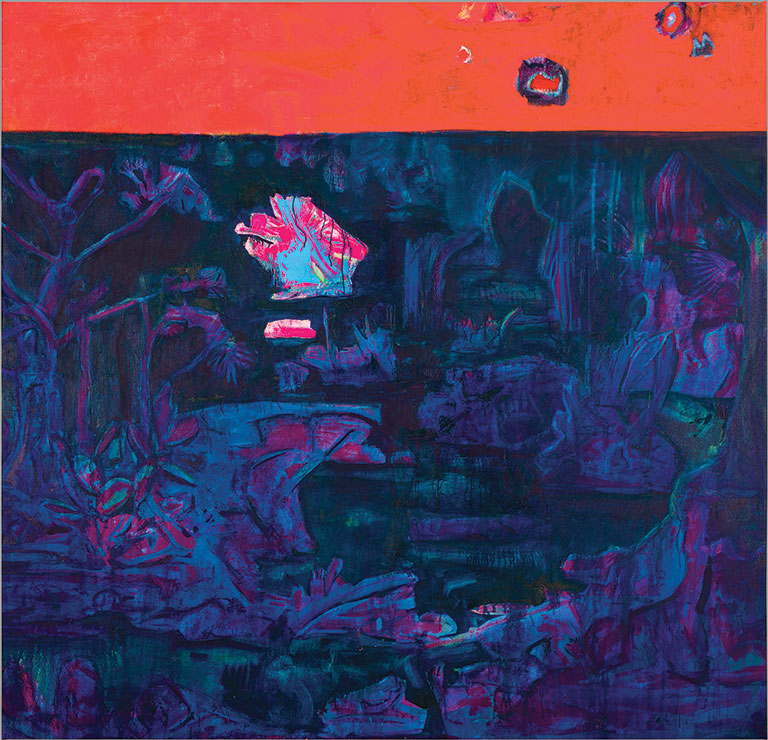You May Also Like
Visions for a Better World The Consummate Friend and Volunteer Creating Belonging Through Art
Cy Gavin, Untitled (Gibbet Island), 2019, acrylic, pink Bermuda sand, aquarelle pencil, chalk and oil on canvas, 92 x 92 in. Purchase, gift of Mr. and Mrs. Richard M. Scaife, by exchange, 2019.54 © Cy Gavin
As a child, Cy Gavin spent long hours accompanying his fundamentalist parents as they spread the Lord’s word in the greater Pittsburgh area. Afterwards, he would get self-directed time at local libraries. “They thought it was innocuous,” says Gavin, a rising figure in contemporary painting. “It was kind of silly of them, but they left me and my sister in libraries, where of course we could access any information from around the world.”
Every weekend, the family made the 40-minute trek from Donora to Carnegie Library of Pittsburgh in Oakland. Despite not being able to afford admission to the neighboring Carnegie Museums, Gavin quickly learned he could sneak in through the library’s basement. “Once I got in, I never left,” Gavin says. “I spent my childhood there. It was profound for me. It made me curious about so much that informed my aesthetic and conceptual sensibility.”
Starting at age 11 or 12, he drew specimens in Bird Hall and made copies of paintings in the Scaife Galleries. He encountered the idea of evolution and discovered the old masters as well as contemporary artists such as Glenn Ligon and Christopher Wool. “It was the first time I encountered Francis Bacon,” recalls Gavin. “It was a very formative moment in my life.”
By spring 2020, Gavin’s 2019 painting Untitled (Gibbet Island) will share space with these artists. Recently acquired by the museum, it’s the first work by Gavin to enter the collection, complementing acquisitions made by other artists pushing against the edges of figurative painting.
Gavin draws inspiration from the colonial history of Bermuda, his late father’s homeland, and often incorporates its flora and fauna in his work, in this case pink sand. The painting features a nocturnal landscape of a tiny Bermudian island, Gibbet Island, where escaped slaves were hanged by gibbet as a warning to others. “It’s tree-covered and surrounded by blue, crystal-clear water,” says Gavin. “Tourists fly by and say, ‘Oh, how lovely.’ It’s important to incite some curiosity into the place.”
Receive more stories in your email
Sign upTags:
Art